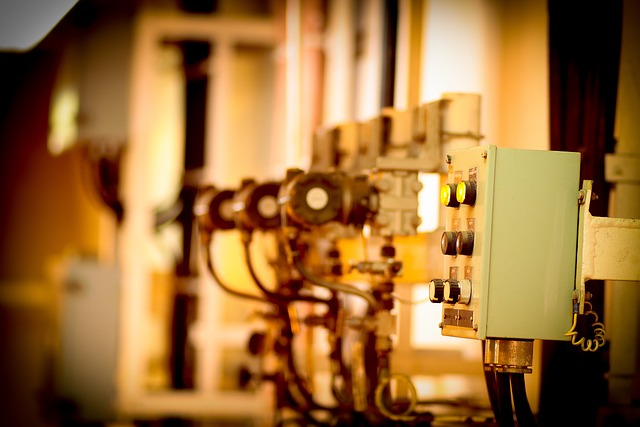Understand the Safe and Efficient Use of the Continuous Auger Drilling Machine
Continuous auger drilling machines represent a significant advancement in construction and geotechnical engineering, offering precise and efficient drilling capabilities for various applications. These sophisticated machines combine continuous flight auger technology with modern hydraulic systems to create holes while simultaneously removing soil or debris. Understanding their proper operation, safety protocols, and maintenance requirements is essential for maximizing productivity while ensuring workplace safety and equipment longevity.

Continuous auger drilling machines have revolutionized the construction and geotechnical industries by providing efficient, precise drilling solutions for foundations, utility installations, and soil sampling projects. These powerful machines utilize rotating helical augers to penetrate various soil types while continuously removing excavated material, making them indispensable tools for modern construction operations.
What is the Concept and History of the Continuous Auger Drilling Rig
The continuous auger drilling rig evolved from traditional manual auger tools used centuries ago for well drilling and foundation work. Modern continuous auger systems emerged in the mid-20th century as construction demands increased and technology advanced. These machines combine the ancient principle of helical drilling with contemporary hydraulic power systems, computer controls, and precision engineering. The concept centers on using a continuous flight auger that rotates while advancing into the ground, creating a hole while simultaneously transporting spoil material to the surface through the auger’s helical flights.
How Does the Operating Principle of Continuous Helix Work
The operating principle of continuous helix drilling relies on the rotational motion of a helical auger shaft that penetrates soil while removing excavated material. As the auger rotates and advances downward, the helical flights act as a conveyor system, lifting soil and debris to the surface. The drilling process maintains continuous contact between the auger and the hole walls, providing stability and preventing collapse. Hydraulic systems control the downward pressure, rotation speed, and extraction force, allowing operators to adjust parameters based on soil conditions and project requirements.
What are the Key Equipment Components and Structure Elements
Continuous auger drilling machines consist of several critical components working in harmony. The power unit, typically a diesel engine, drives hydraulic pumps that operate the rotary head, crowd system, and auxiliary functions. The mast assembly provides structural support and guides the auger during drilling operations. The rotary head delivers torque to the auger while the crowd system applies downward pressure. Additional components include the auger itself with continuous flights, stabilizer systems, control panels, and safety equipment. Modern machines often feature computerized monitoring systems that track drilling parameters and equipment performance.
What are the Primary Technical and Sectoral Applications
Continuous auger drilling machines serve diverse technical and sectoral applications across multiple industries. In construction, they create foundation holes for buildings, bridges, and infrastructure projects. Utility companies use these machines for installing poles, signs, and underground service connections. Geotechnical engineers employ them for soil sampling, environmental monitoring well installation, and ground improvement projects. The mining sector utilizes continuous auger rigs for exploration drilling and ore sampling. Agricultural applications include fence post installation and irrigation system development.
What Safety and Maintenance Procedures Should Be Followed
Proper safety and maintenance procedures are crucial for continuous auger drilling machine operation. Safety protocols include conducting pre-operation inspections, ensuring proper personal protective equipment usage, maintaining safe distances from overhead utilities, and implementing lockout/tagout procedures during maintenance. Regular maintenance involves checking hydraulic fluid levels, inspecting auger flights for wear, lubricating moving parts, and monitoring engine performance. Operators should follow manufacturer-recommended service intervals, replace worn components promptly, and maintain detailed maintenance records. Emergency shutdown procedures and operator training programs are essential safety elements.
| Equipment Type | Manufacturer | Drilling Depth | Cost Estimation |
|---|---|---|---|
| Small Track Auger | Bobcat/Takeuchi | 10-15 feet | $80,000-$120,000 |
| Mid-Size Truck Mount | Diedrich/CME | 50-100 feet | $200,000-$400,000 |
| Large Track Rig | Soilmec/Casagrande | 100+ feet | $500,000-$1,200,000 |
| Compact Trailer Unit | Little Beaver/Baumalight | 8-12 feet | $25,000-$60,000 |
Prices, rates, or cost estimates mentioned in this article are based on the latest available information but may change over time. Independent research is advised before making financial decisions.
Continuous auger drilling machines represent sophisticated engineering solutions that require proper understanding, operation, and maintenance to achieve optimal performance. By following established safety protocols, maintaining equipment according to manufacturer specifications, and understanding the operational principles, operators can maximize productivity while ensuring safe working conditions. The versatility and efficiency of these machines make them valuable assets across multiple industries, from construction and utilities to environmental and geotechnical applications.




